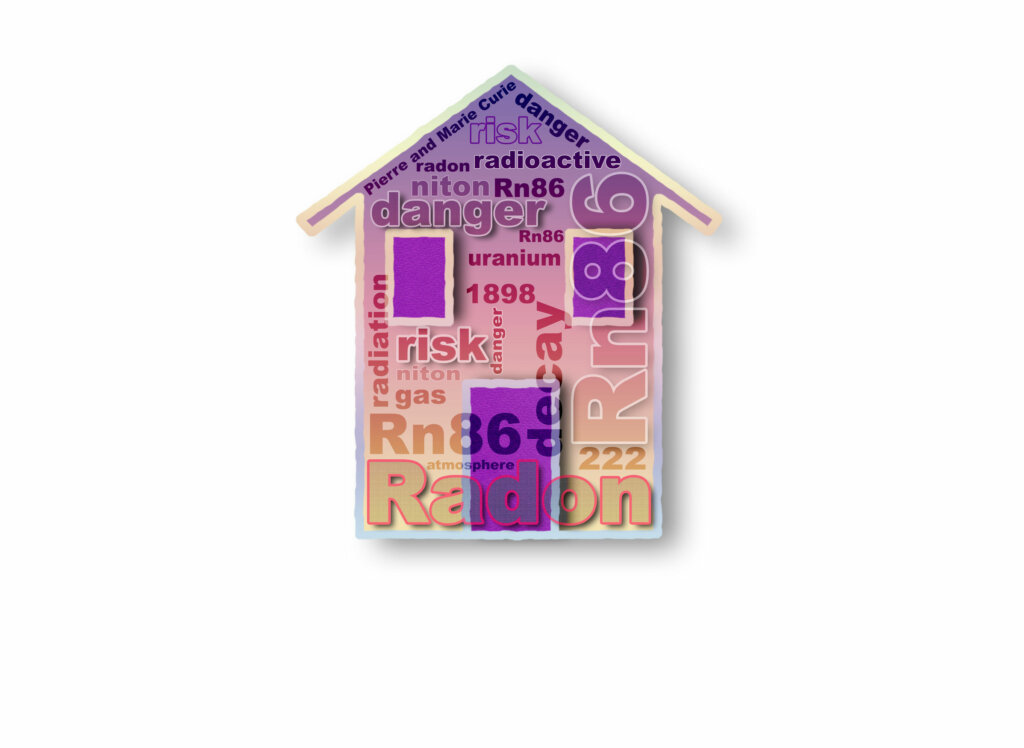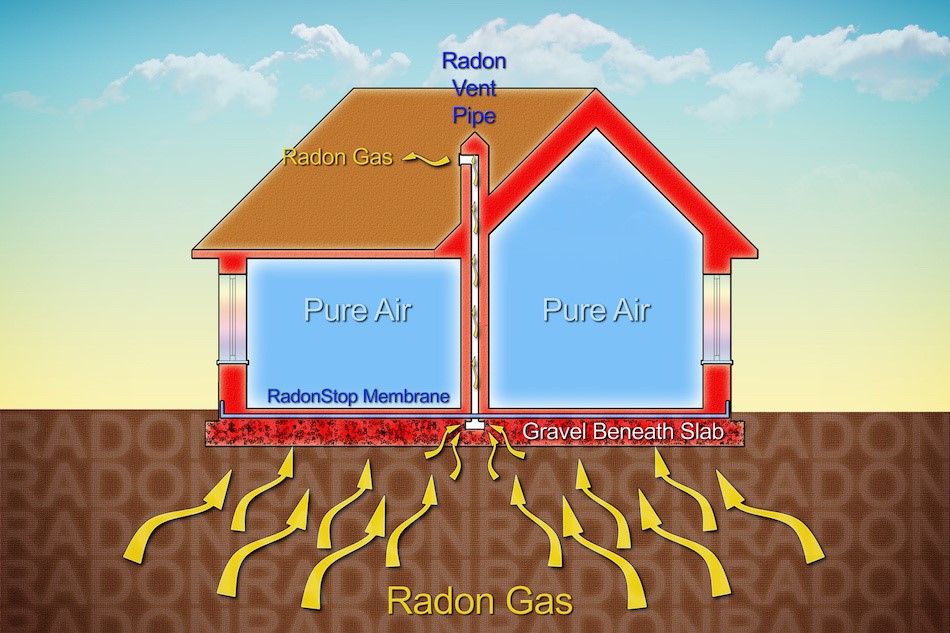By Robert Dekanski — Healthy Indoors Magazine – September 2019 Edition–

The process of buying a home requires a good amount of investigation, even in the best of situations. When there are concerns that may be hidden or invisible, that just makes it even more important for those looking to buy a home to perform their due diligence. One very important example of this is determining if a property has (or is prone to having) a radon problem.
Radon is a natural occurring radioactive gas that is a colorless, odorless and tasteless. It is practically undetectable without the use of specialized detection equipment. The presence of radon in a home is concerning because not only can it not be seen, smelled or tasted, the Surgeon General says that radon exposure is the second leading cause of lung cancer in non-smokers in the United States today. In fact, about 2,900 of the 21,000 reported radon-related lung cancer deaths include people who have never smoked. In addition, the elderly, young children, smokers, and anyone with breathing/lung or other respiratory issues can be at higher risk of severe illness or death when overexposed to radon.
While radon can be found in homes and other buildings across the entire United States, there are certain “radon zones” around the country in which the chances of finding radon in significant levels is higher than average. This is critical information to understand when entering into a transaction to buy a home. In addition to the other inspections to ensure a home is indeed a safe place to live, buyers should perform a dedicated radon inspection in order to determine radon levels so that any previously uncovered issue can be dealt with in a fair and equitable manner.
A home purchase is one of the most significant transactions people go through in their lives. It should stand to reason that most people don’t want to be exposed to a significant danger and/or cost right after closing. The way one approaches a deal can greatly reduce their financial and health risks.
This guide will discuss radon’s natural presence in a home, acceptable radon levels, what protections are available, ways in which a radon issue may be resolved and how to reduce radon levels in a home. We’ll also include some resources and available programs for those currently dealing with a radon issue. Radon can sound scary, and while it certainly should grab your attention, dealing with it may be easier than you think.
Radon’s Presence in the Home

Radon is generated through the natural process of Uranium decay in the ground. It is found in most soils and well water and can enter the home through cracks and gaps in the floors or walls of a home. Basements and crawl spaces are common high-risk areas in a home, but in reality, risks from radon and its presence will vary from property to property. Radon is even found in the air we breathe everyday but generally is not a problem because it dissipates so quickly in open areas. This makes remediation a relatively simple process.
Like other potentially dangerous contaminants found in our daily lives, there are exposure levels of radon that are considered acceptable and safe. According to the EPA, the level of radon requiring serious action is 4 pCi/L or higher. A pCi/L is a measurement that stands for “pico-Curies per liter” of air. And if that sounds confusing, it gets a little more involved: A “pico Curie” is one-trillionth of a Curie, and Curie is equivalent to 37 billion radioactive disintegrations per second. Therefore, one pico-Curie works out to be 2.2 radioactive disintegrations per minute in a liter of air.
An example of this would be a family whose home has radon levels of 4 pCi/L is considered to be exposed to about 35 times as much radiation as the Nuclear Regulatory Commission (NRC) would allow if that same family were standing next to the fence of a radioactive waste site. In other words, they’re exposed to more radiation every day in their own home than what’s legally allowed if they were standing right outside a nuclear power plant.
While the average homebuyer may not need to know the minutiae of radon readings and test results, it can be helpful to know the dangers, language and processes of dealing with radon.
Home Buyer Due Diligence

The way buyers go about protecting themselves and their household when buying a home may depend on if they are building a new home or purchasing a pre-owned home. Most home builders are familiar with construction processes that can deter radon from entering a home and perhaps even installing a passive radon ventilation system as a preventative measure while the home is being built.
If buyers are interested in purchasing an existing home, they’ll want to be assured that 1.) radon is not a problem on the property and 2.) if radon levels exceed recommendations, there are processes in place to ensure the issue will be addressed to the satisfaction of all parties involved.
Buyers should inquire about any previous radon testing on the property and if possible, request the report results and dates. Even if this information is disclosed, it is often advised for a buyer to have their own inspection. In an area or “zone” prone to radon, arguably any contract for purchase should include radon testing and how any discovered issues will be mitigated. The good news is that even homes with high levels of radon can often be successfully mitigated relatively easily. This means that high radon levels should not necessarily be a “deal breaker” in a real estate transaction. However, it is still important to determine how the issue will be resolved and who is responsible for resolving it. Both buyer and seller typically seek to find a resolution that is most favorable to them, but high radon test results most often means that the seller is responsible for remediation.
Read the full article in the September 2019 edition of Healthy Indoors Magazine at: https://hi.healthyindoors.com/i/1173074-hi-sept-2019/15
The post Radon Protection: How Homebuyers can do Their Due Diligence appeared first on Healthy Indoors.






















